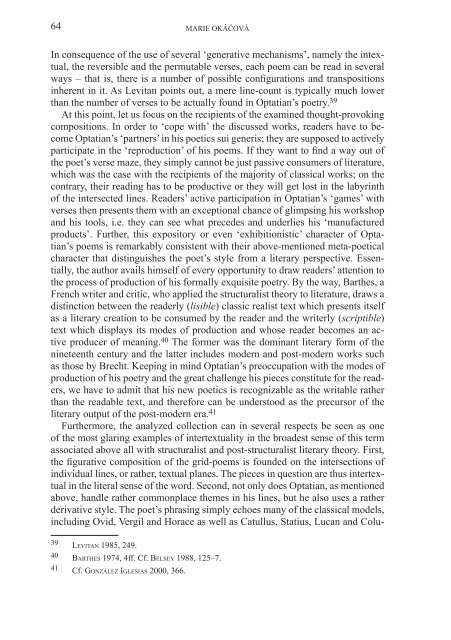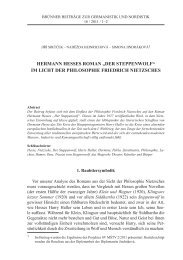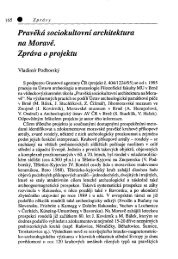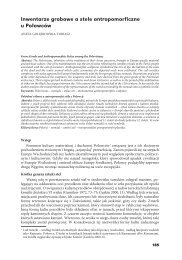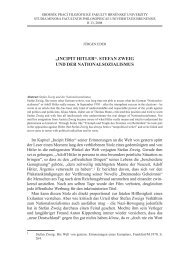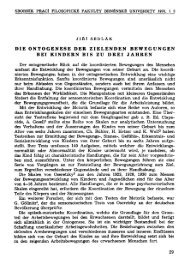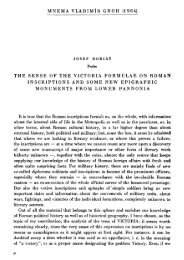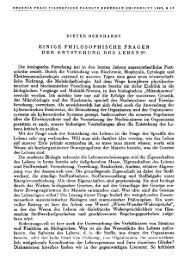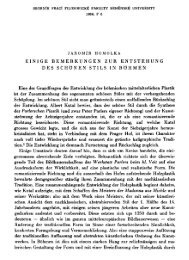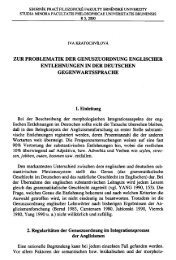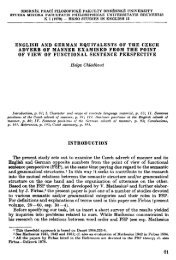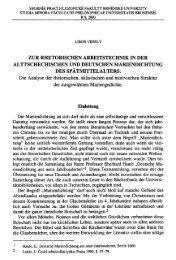publilius optatianus porfyrius: characteristic features of late ancient ...
publilius optatianus porfyrius: characteristic features of late ancient ...
publilius optatianus porfyrius: characteristic features of late ancient ...
You also want an ePaper? Increase the reach of your titles
YUMPU automatically turns print PDFs into web optimized ePapers that Google loves.
64 MARIE OKÁČOVÁIn consequence <strong>of</strong> the use <strong>of</strong> several ‘generative mechanisms’, namely the intextual,the reversible and the permutable verses, each poem can be read in severalways – that is, there is a number <strong>of</strong> possible configurations and transpositionsinherent in it. As Levitan points out, a mere line-count is typically much lowerthan the number <strong>of</strong> verses to be actually found in Optatian’s poetry. 39At this point, let us focus on the recipients <strong>of</strong> the examined thought-provokingcompositions. In order to ‘cope with’ the discussed works, readers have to becomeOptatian’s ‘partners’ in his poetics sui generis; they are supposed to activelyparticipate in the ‘reproduction’ <strong>of</strong> his poems. If they want to find a way out <strong>of</strong>the poet’s verse maze, they simply cannot be just passive consumers <strong>of</strong> literature,which was the case with the recipients <strong>of</strong> the majority <strong>of</strong> classical works; on thecontrary, their reading has to be productive or they will get lost in the labyrinth<strong>of</strong> the intersected lines. Readers’ active participation in Optatian’s ‘games’ withverses then presents them with an exceptional chance <strong>of</strong> glimpsing his workshopand his tools, i.e. they can see what precedes and underlies his ‘manufacturedproducts’. Further, this expository or even ‘exhibitionistic’ character <strong>of</strong> Optatian’spoems is remarkably consistent with their above-mentioned meta-poeticalcharacter that distinguishes the poet’s style from a literary perspective. Essentially,the author avails himself <strong>of</strong> every opportunity to draw readers’ attention tothe process <strong>of</strong> production <strong>of</strong> his formally exquisite poetry. By the way, Barthes, aFrench writer and critic, who applied the structuralist theory to literature, draws adistinction between the readerly (lisible) classic realist text which presents itselfas a literary creation to be consumed by the reader and the writerly (scriptible)text which displays its modes <strong>of</strong> production and whose reader becomes an activeproducer <strong>of</strong> meaning. 40 The former was the dominant literary form <strong>of</strong> thenineteenth century and the latter includes modern and post-modern works suchas those by Brecht. Keeping in mind Optatian’s preoccupation with the modes <strong>of</strong>production <strong>of</strong> his poetry and the great challenge his pieces constitute for the readers,we have to admit that his new poetics is recognizable as the writable ratherthan the readable text, and therefore can be understood as the precursor <strong>of</strong> theliterary output <strong>of</strong> the post-modern era. 41Furthermore, the analyzed collection can in several respects be seen as one<strong>of</strong> the most glaring examples <strong>of</strong> intertextuality in the broadest sense <strong>of</strong> this termassociated above all with structuralist and post-structuralist literary theory. First,the figurative composition <strong>of</strong> the grid-poems is founded on the intersections <strong>of</strong>individual lines, or rather, textual planes. The pieces in question are thus intertextualin the literal sense <strong>of</strong> the word. Second, not only does Optatian, as mentionedabove, handle rather commonplace themes in his lines, but he also uses a ratherderivative style. The poet’s phrasing simply echoes many <strong>of</strong> the classical models,including Ovid, Vergil and Horace as well as Catullus, Statius, Lucan and Colu-39 Le v i ta n 1985, 249.40 Ba rt h e s 1974, 4ff. Cf. Be l s e y 1988, 125–7.41 Cf. Go n z á l e z Ig l e s i a s 2000, 366.


